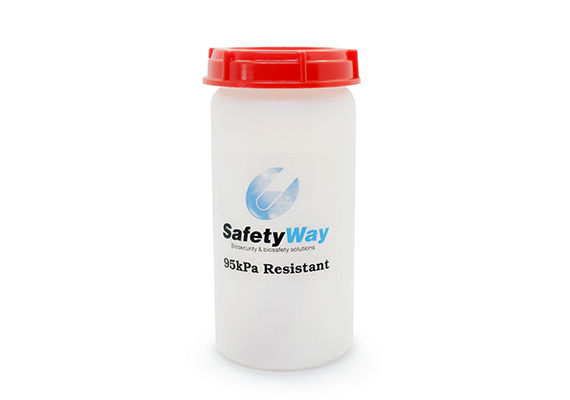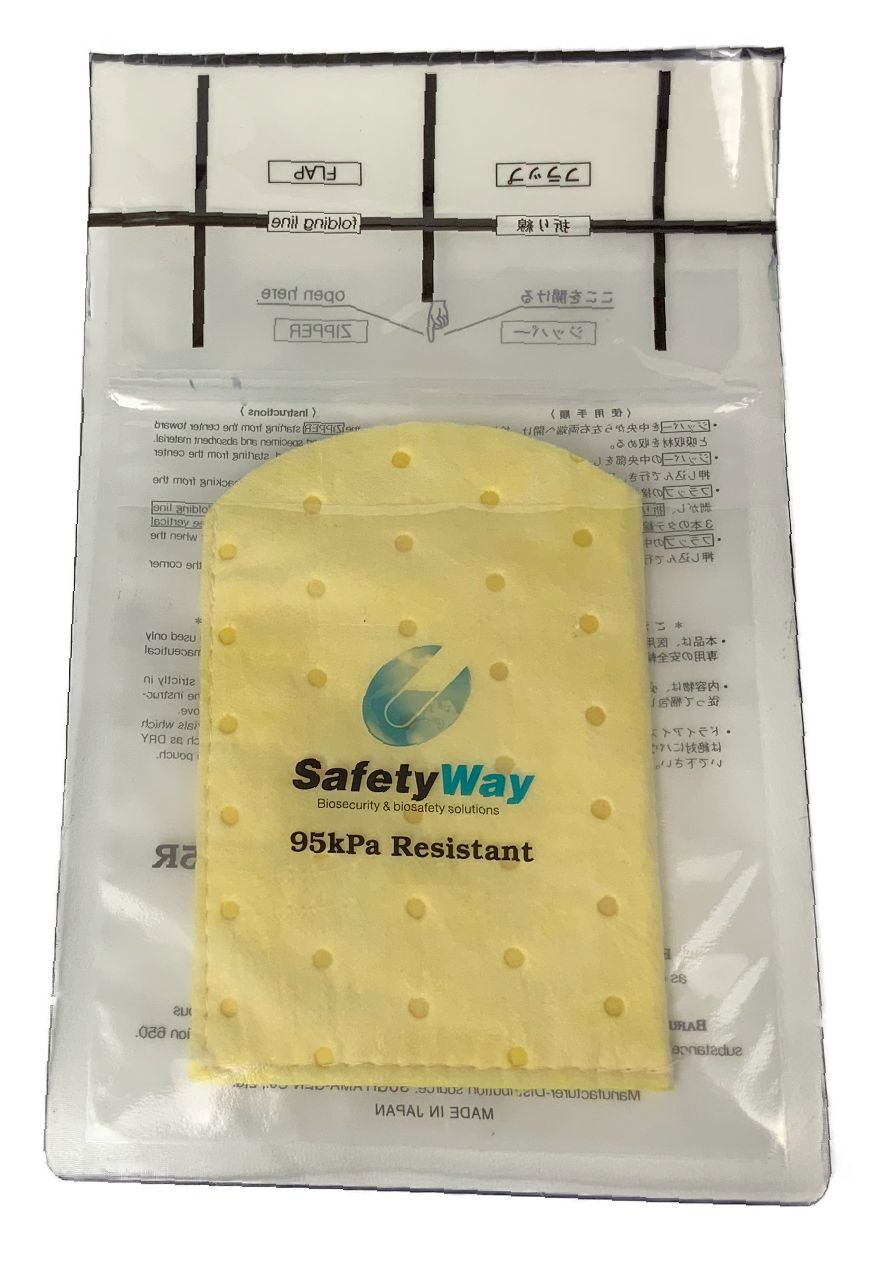
For the transportation of laboratory samples, the WHO recommends the use of the Triple Packaging System, which consists of three types of containers, in order to ensure the safe transportation of samples.
1. Leakproof primary receptacle (not supplied) and absorbent pouch:
This is the container that holds the substance to be transported, and can be in the form of sample tubes, Petrie dishes or urine collectors, among others. If they contain liquid samples, they are placed inside an absorbent safety pouch/pouches, made of hi-tech polymer with an absorption capacity of up to 25 times its weight. In the event of breakage, all the liquid being shipped can be absorbed.


2. Secondary container:
Complies with the legal requirement to withstand an internal pressure of 95 kPa in order to ensure the shipment is leakproof, and allows several primary receptacles with samples to be placed inside. These containers may be in bag or canister format, and are fitted with security seals.


3. Outer packaging
Includes stability elements to ensure the secondary containers are in the correct position and all the pictograms required for its transport. It must be resistant to water, ripping, impacts and chemical agents.

